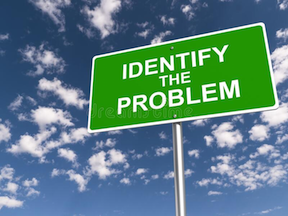

Does “not energizing negativity” mean I am not allowed to feel bad? Or that my kids aren’t allowed to express themselves when they’re upset? Do I have to pretend that everything is happy-pappy even when it’s not? These are questions I commonly get asked as a Nurtured Heart Approach® Advanced Trainer and coach.
We all know the stereotype; the overly cheerful person who constantly claims that things are “so good!” even when you know they’re not. And many of us know by now that this kind of denial of our healthy negative emotions leads to unhealthy physical, mental and emotional pain, as the negativity we’ve worked so hard to tamp down deep inside builds up pressure until it has to blow.
 So let’s explore how Nurtured Heart Approach is very different from toxic positivity, defined by thepsychologygroup.com as “the excessive and ineffective overgeneralization of a happy, optimistic state across all situations. The process of toxic positivity results in the denial, minimization, and invalidation of the authentic human emotional experience.”
So let’s explore how Nurtured Heart Approach is very different from toxic positivity, defined by thepsychologygroup.com as “the excessive and ineffective overgeneralization of a happy, optimistic state across all situations. The process of toxic positivity results in the denial, minimization, and invalidation of the authentic human emotional experience.”
The key to understanding how Nurtured Heart Approach is different from that type of “positive thinking” is understanding how NHA deals with negativity, how we respond when things go wrong. How do we deal with difficult people? What about problems and failure?
First, a quick review of the Three Stands™ of the Nurtured Heart Approach:
Stand One: “Absolutely NO! I refuse to give energy to negativity.”
Stand Two: “Absolutely YES! I will make miracles out of molecules by recognizing Baby Steps in the right direction.
Stand Three: “Absolutely CLEAR!” I will be clear about my rules and boundaries, and I will help myself and others get back on track with an unenergized “Reset” as often as necessary.
Since Nurtured Heart Approach is most commonly first discovered by people needing to deal with difficult behavior in a child, let’s turn first to that application. When dealing with a difficult person, Nurtured Heart is not about ignoring what they are doing wrong. It is not the inability to say no to them. It is about employing the Three Stands to direct our energy toward what we want to see more of, and to withhold that energy from what we don’t. Stand 1 is about learning to regulate ourselves, before we react.
The Self Reset is key. Advice like “take a deep breath” or “count to 10 before you react” has been around for a long time. Neither of those ever really worked for me, until I understood how important it is that I control my energy in the midst of trouble. Your energy is your power! You see, when you are dealing with an intense person, what they crave is sizzling emotional connection. Most of the time, they are not doing this
 intentionally or on a conscious level. They have a need, and they’ve learned that the way to get it met is through negative behavior. As long as you show up most passionately when things are going wrong, you’ll continue to see more of what you don’t want. So whether it’s deep breathing, counting to 10, leaving the room until you’re calm, or whatever else works to help you regulate your response, get serious about learning to reset yourself in the face of negativity.
intentionally or on a conscious level. They have a need, and they’ve learned that the way to get it met is through negative behavior. As long as you show up most passionately when things are going wrong, you’ll continue to see more of what you don’t want. So whether it’s deep breathing, counting to 10, leaving the room until you’re calm, or whatever else works to help you regulate your response, get serious about learning to reset yourself in the face of negativity.
When you’re working on transforming your relationship with an intense or difficult person, you still need to give them the powerful energetic connection they are seeking, but now you’re going to do that in response to everything they’re doing right, or even what they’re not doing wrong (Stand 2). This is not the same as telling them nice things about themselves, like “You are smart.” It is finding the evidence of the great qualities within them, even just the tiniest seeds of those qualities, and showing them that evidence. What you energize, you’ll get more of. What you water, grows. Even the most out-of-control child is actually doing a lot right, a lot of the time. Our Stand 3 clarity helps us find what is going right. We are clear about our Yes and our No. Stand 3 clarity opens up the way to finding the greatness in the truth of the moment, and the truth of the moment is crucial. Whatever you recognize must be true. It can’t just be what you wish were true. Whenever a rule is not being broken, that demonstrates a choice to follow it and illuminates greatness.

Let’s turn now to problems. We all have problems. They are real. The Nurtured Heart Approach way of dealing with problems is to confront them from a strengths base, and this involves all of The Three Stands. The first step is, once again, the Stand 1 Self-Reset. It’s so important that you reset before you react, lest you react in a way you later regret. Then Stand 3: get a clear definition of the problem; what is not working, or what rule has been broken. Who does this affect? What problems does it cause? Make sure you have thought through the problem from all angles and arrived at a clear definition, but here is the tricky part, and it’s crucial: Once you have defined the problem, stop thinking about the problem (Stand 1) and start thinking about solutions (Stand 2). What resources/strengths/greatnesses are at your disposal, and how can you call on them to create the solution? Stand 1 and Stand 3 have opened up the pathway for Stand 2! When we approach problems with The Three Stands, we avoid Toxic Positivity; we are careful to acknowledge all aspects of the problem, and we move quickly past ruminating about it on to solving it from a position of strength.
Failure is another very real part of life. Many of us have learned to fear failure, and see it as something to be avoided at all costs. However, if you’re living life to the fullest and pushing yourself to learn and grow, you will probably fail sometimes. At the very least, you will make mistakes. Ever dealt with someone who can’t seem to own up to making an error? These poor souls most likely are this way because their sense of self can’t afford to acknowledge their fallibility. Great news! NHA helps solve this problem, because the core intention of the approach is to build Inner Wealth.™ More Inner Wealth = Stronger Self = Growth Mindset (also known as the ability take risks and accept failure.) So what is the Nurtured Heart Approach way to look at failure? Stand 1: Self-Reset. Breathe in deeply the energy of your disappointment. Allow yourself to deeply feel all your emotions. Stand 2: Recognize that your feelings are healthy and valid. What do they say about you? What does it say that you even tried this thing you failed at? What greatness are you showing in the way that you are handling it? What have you learned? Stand 3: Apply what you have learned. Re-draw any boundaries that need corrected as a result of the lesson.
If you have been considering trying out Nurtured Heart Approach, but you’ve been worried that it might just lead to Toxic Positivity, you are showing yourself to be discerning and wise, understanding that there is a place for all emotions, even negative ones. NHA is not about glossing over problems, ignoring inappropriate behavior, or squashing bad vibes. It is a set of tools for Social Emotional Learning that helps us master our thoughts to improve our emotional health, and helps us maintain our well-being through clear boundaries and strengths based problem solving.
If your interest is piqued and and you’re ready to learn more, head on over to my Classes and Coaching section. I’d love to help you discover the amazing benefits to your life and relationships that are waiting for you when you learn and practice Nurtured Heart Approach.